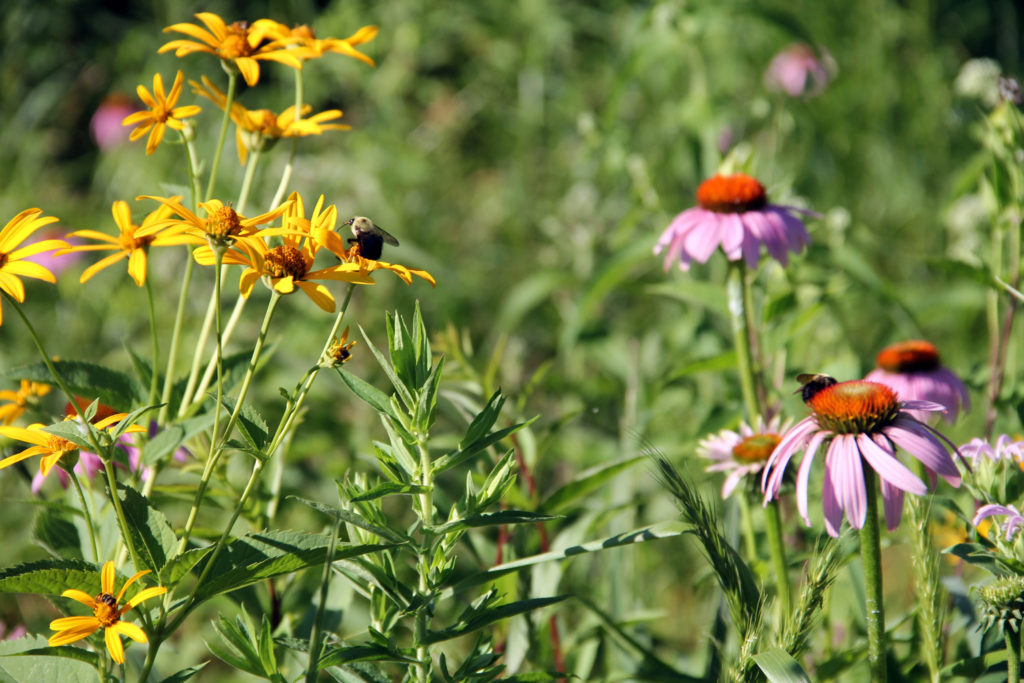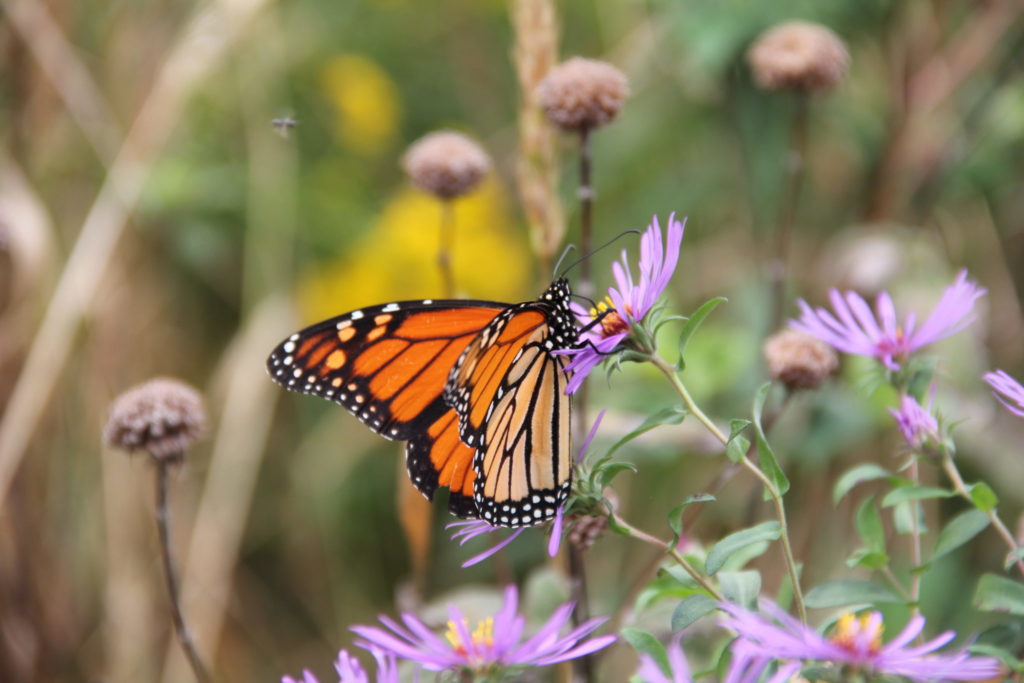Native plants are the preferred choice of our land stewards and scientists at The Watershed Institute, especially those plants that spread quickly and crowd out undesirable invasive plants.

Native plants include ferns, grasses, perennial and annual wildflowers, woody trees, shrubs and vines that existed before the first European settlers arrived. There are many advantages to selecting native plants for your yard and garden.
Choosing native plants will save you both time and money. They are adapted to the local environment and require little, if any, fertilizers or pesticides to thrive or additional watering. By contrast, non-native plants are more prone to pests and diseases, and need chemical treatments.
 Native plants preserve the local ecosystem, providing shelter birds, butterflies, and other wildlife. Once planted, these important plant species offer nectar, pollen, seeds and other food for native birds, butterflies, bees and other animals.
Native plants preserve the local ecosystem, providing shelter birds, butterflies, and other wildlife. Once planted, these important plant species offer nectar, pollen, seeds and other food for native birds, butterflies, bees and other animals.
Additionally, the deep root systems of native plants increase the soil’s capacity to store water, so native plants can reduce flooding and polluted stormwater runoff.
Learn more by contacting the Watershed’s Stormwater Specialist, Kory Kreiseder at [email protected] and by exploring the resources at your local cooperative extension.

